 On November 20, 1931, the Finance Minister António Oliveira Salazar arrived in the Algarve, four hours late. The visit, “truly unexpected”, in the words of “Diário de Notícias”, aimed to observe “in loco” the problems of the canning industry, with a view to its organization.
On November 20, 1931, the Finance Minister António Oliveira Salazar arrived in the Algarve, four hours late. The visit, “truly unexpected”, in the words of “Diário de Notícias”, aimed to observe “in loco” the problems of the canning industry, with a view to its organization.
The protests of the industrialists were for those days very frequent, whether or not the canned food was sold at a 30% loss on the cost price.
Despite the difficulties dating back to the mid-1920s, largely caused by the valorization of the Escudo in 1924, and by the terrible shortage of fish the following year, the situation became more and more acute.
In the early 30s, the sector was divided over the solutions to be adopted. While cartelization was demanded by some, others wanted the regulatory intervention of the State.
At that time, canned exports occupied a distinct second place, preceded only by wines. The finance minister's interest in the sector was thus explained by its importance in national exports and in the Portuguese trade deficit.
After visiting Évora and staying overnight in Beja, Oliveira Salazar was expected in Vila Real de Santo António at lunchtime, that Friday, 20 November. At 14 pm, however, the minister, along with his chief of staff Leal Marques, and Eng. Sebastião Ramirez (industrial from Vila Real de Santo António and president of the canning section of the Portuguese Industrial Association), had not transposed the mountain. algarvia, where he was awaited by the commander of the district Police, Captain Maia Mendes.
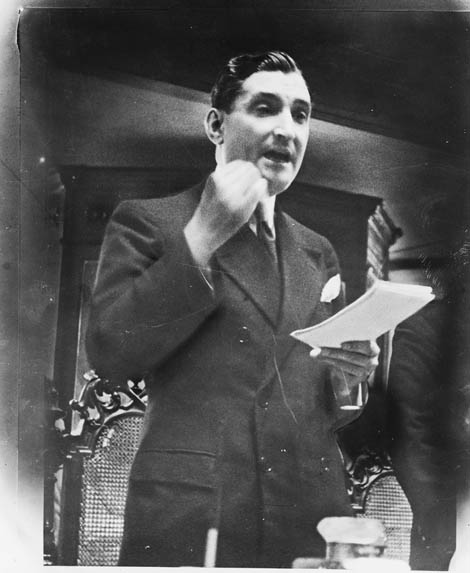 The trip started with a car stuck in Castro Verde
The trip started with a car stuck in Castro Verde
The trip took place by car, however the car attacked, in the vicinity of Castro Verde, where the road was still under construction.
This setback led to a forced stop of the entourage, “having been necessary to wait for the help of a yoke of oxen” to remove the vehicle from that position, as reported days later by the weekly newspaper “Correio do Sul”.
This obstacle led the "eminent statesman" to reach Faro at 17:25 pm, having gone immediately to Vila Real de Santo António, where he arrived at 18:40 pm.
Shortly after staying at the Grande Hotel Guadiana, António de Oliveira Salazar received the compliments of the local authorities and the civil governor, Captain João Carlos Mendonça, who had moved there on purpose.
After dinner, the minister gave a short tour of the village, accompanied by Sebastião Ramirez, Matias Sanches (chairman of the Administrative Commission of the Chamber), Lieutenant Rebelo (administrator of the council), José Sanches, Frederico Ramirez, João Barroso and Mário Ramirez, having visited the new facilities of the port captaincy, the future fishing school and the new building of the Sousa Coutinho primary school, weaving, according to the periodical “A Voz”, “praise for the way everything was arranged”.
The following morning, accompanied by the same entourage as the previous night, as well as by the civil governor, he visited Oliveira Salazar several sardine and tuna canning factories, such as Ramirez & C.ª, Parodi, Aliança and one for the production of canisters. , to Sanches & Barroso.
In each of them, he learned about their functioning, market conditions, workers' lives, wages and sales prices. Finally, he briefly visited the works at the port and the Town Hall, then having lunch at the Grande Hotel Guadiana.
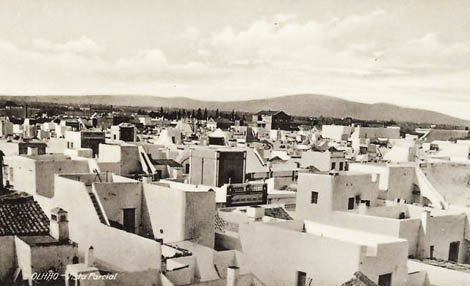 Industrialists awaited results of the visit of the finance minister
Industrialists awaited results of the visit of the finance minister
At 13:30 pm, the delegation headed by car to Olhão, where it arrived about an hour later. At the Ramirez factory, he was the minister awaited by the Administrative Commission of the Municipality, the Commercial and Industrial Association, among other entities (Junta Autónoma do Porto Faro-Olhão, Municipal and District Committee of the National Union, represented, respectively, by Colonel Cochado Martins, Justino Bívar and Mário Lyster Franco, and also by Comendador Ferreira Neto).
After the presentation of greetings, according to “O Século”, the president of the Trade Association stated that the industrialists he represented “regarded with pleasure the visit of that member of the Government, hoping that it would result in some benefit for these industries, which were so abandoned have been and need to be subject to State inspection.” Salazar replied “that he was going to study the matter”.
The minister then visited the Júdice Fialho factory, where he was guided by D. António Sousa Coutinho, the owner's son-in-law, and by Emiliano Ramos, followed by JN Pité, Lda.
The latter was in operation, and the illustrious visitor observed in detail and questioned some of the works. As he walked through the village, Oliveira Salazar expressed the desire to go up to a roof terrace, to observe the general appearance of Olhão, which he would consider extremely curious from the viewpoint of Arnaldo Martins.
This was finally followed by a visit to the José Reis Silva e Tomé, Lda factory.
The little guy who asked Salazar for a job for his father
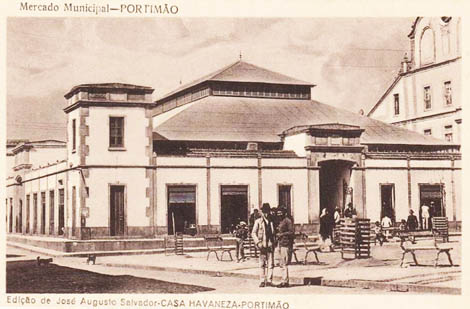 After a brief stop in Santo António do Alto to admire the panorama, the finance minister arrived in Faro by 16:30 pm. He then visited the Maritime Museum in the Maritime Department of the South, in Largo da Sé, where he was awaited by the respective chief, Captain Ramalho Ortigão and his assistant, Captain Lieutenant Guerreiro Brito, and other Navy officers.
After a brief stop in Santo António do Alto to admire the panorama, the finance minister arrived in Faro by 16:30 pm. He then visited the Maritime Museum in the Maritime Department of the South, in Largo da Sé, where he was awaited by the respective chief, Captain Ramalho Ortigão and his assistant, Captain Lieutenant Guerreiro Brito, and other Navy officers.
During the visit to the museum, the objects were described in detail by Captain Ortigão, having, according to the DN, mainly aroused the interest of the distinguished visitor "the models of tuna and sardine frames, and those of the American and Valencian sieges."
A lengthy conference was then held, in which Salazar expressed his desire that “Portuguese canned food should be increasingly believed abroad, and not be harmed by poorly cared for products”, as reported by “O Século”.
After the conference was over and the minister got into the car that would take him to Portimão, there was an episode that moved everyone present and became inseparable from Salazar's visit to the region. A 12-year-old student at Liceu João de Deus, José Cabrita Matias, approached the minister and asked him to intercede for his father, António Gonçalves Matias, to be appointed as a Customs rower.
The child argued that his father had been unemployed for a few years, and despite being a combatant of the Great War, he had been waiting for four months for the application to be granted, with only his mother, a seamstress by profession, who supported the family cluster, composed of six people . The minister patted the boy and promised to take an interest in the matter, asking him to write to Lisbon.
Little press for the visit to the Barlavento Algarvio
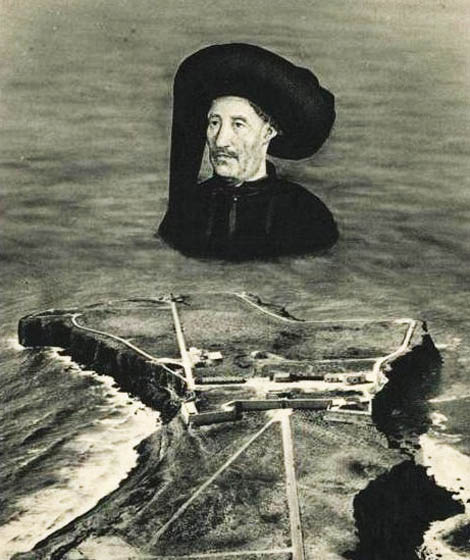 If the press at the time described the visit to the Eastern Algarve in detail, it was very sparse in terms of content about the Barlavento.
If the press at the time described the visit to the Eastern Algarve in detail, it was very sparse in terms of content about the Barlavento.
Thus, it is known that, at 19:45 pm, Oliveira Salazar was received in Portimão by Lieutenant Amado da Cunha (administrator of the council), commanders of the Fiscal Guard and GNR, among other entities, and a large number of people from Portimão.
The following morning, on November 21, and after leaving the Hotel Central, where he had stayed, the minister visited Praia da Rocha, whose charms he appreciated with interest, the parish church and the municipal markets, then proceeding to Lagos, where toured the bay by boat (petrol).
From there, he went to Sagres, where he visited the fortress, and was shown the place where the statue of the Infante D. Henrique was to be built.
Back in Portimão, he visited Caetano Feu's canning factory and observed an improvised canning exhibition at the Hotel Central. He will also have visited the Fialho factory.
At 16:30 pm, he left for SB Messines where he boarded the fast train to Lisbon. The weekly “Comércio de Portimão” also states that the minister will also have traveled to Caldas de Monchique.
According to a correspondent for the Catholic Folha de Domingo, Cincinatus, two events marked Oliveira Salazar's ministerial visit to the Algarve: first, “the commotion caused by [the minister] the spontaneous and virile exposure of a poor little student who asked for his protection to his unhappy family (…); second, the question he asked someone from one of the lands where he parked “but mrs. do they have a budget for this expense?…”.
Salazar studied the canning industry in the Algarve
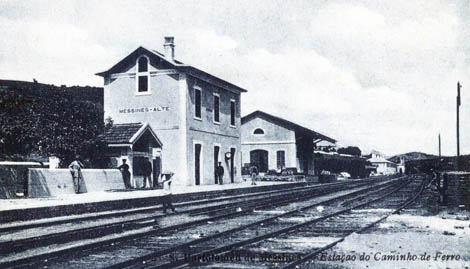 Following this visit, the finance minister drew up a study, “Notes on the Industry and Trade of Canned Fish”, concluded a few weeks later, on 7 December.
Following this visit, the finance minister drew up a study, “Notes on the Industry and Trade of Canned Fish”, concluded a few weeks later, on 7 December.
In this, Oliveira Salazar, according to historian Maria João Raminhos Duarte, in the work “Portimão – Industriais Conserveiros in the 1st half of the XNUMXth century”, a diagnosis of the industry, analyzing the various aspects of deficient industrial and commercial organization, working life and social assistance of the canning sector.
If some of the solutions presented were generalist, he clearly outlined the direction to be taken: the reorganization of the industry should focus on exports, on solving the problems inherent to the foreign market and competition, and for this, the intervention of the State was essential and unavoidable.
However, if the reorganization of the canning industry would not be swift, in January 1932 the regional press reported the admission of the father of the little boy José Cabrita Matias, as an oarsman at the Alfândega de Faro, a gesture by the Minister of Finance, “which cannot fail to sink deeply into our souls”.
Despite carrying out ministerial functions for forty years, António de Oliveira Salazar would only return to the Algarve twice more, both already as President of the Council (as the position of prime minister was then called).
But now, in November 1931, he was just a prominent finance minister, or rather an "eminent statesman," who had promised to balance the country's finances.

Author: Aurélio Nuno Cabrita is an environmental engineer and researcher of local and regional history


















Comments